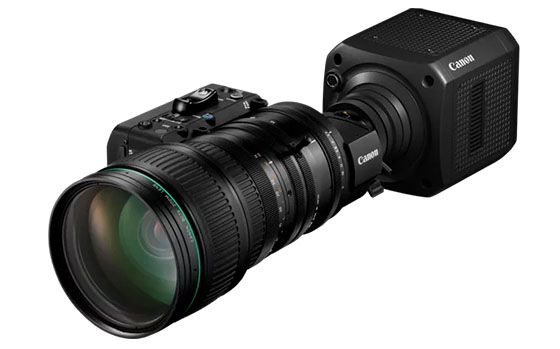
BE THE FIRST TO KNOW
Subscribe our newsletter to get the latest updates, and news from the industry.
Canon has introduced a brand new camera capable of seeing distant subjects in the dark and output them in colour in Full HD. The new Canon MS-500 combines a high sensitivity, 2.1MP, 1-inch type SPAD sensor with a B4 mount that’s compatible with Canon’s powerful telephoto broadcast lenses.

A SPAD sensor, also known as a Single Photon Avalanche Diode sensor, is a specialized type of photo-detector used in various applications that require the detection of extremely low levels of light. It operates based on the principle of avalanche breakdown in a reverse-biased junction.
Photons Detection: When a photon (a particle of light) strikes the semiconductor material of the SPAD sensor, it generates an electron-hole pair.
SPAD sensors have gained popularity in recent years due to advancements in nanotechnology and semiconductor fabrication techniques, allowing for more efficient and cost-effective designs. They play a crucial role in many modern applications, particularly in fields where extremely low light levels need to be measured with high precision and timing resolution.
The new MS-500 camera from Canon features a B4 mount making it compatible with a vast range broadcast lenses. The MS-500 can accurately capture subjects with precision in extreme low-light environments, even from great distances, making it suitable for a wide range of applications including wildlife, live events and sports.
Other applications include nighttime monitoring of seaports, thanks to its ability to spot vessels that are several km away, thus enabling identification and high-precision monitoring of vessels in or around the seaport.
To see these great products in action, give us a call to arrange a demo on 0208 977 1222. If you want to learn more, head over to our website www.visuals.co.uk
For more information, you can contact us directly via the following:
Web: www.visuals.co.uk
Tel: 0208 977 1222
For tips and independent advice follow us on:
Facebook: www.facebook.com/visualimpactbroadcast
Twitter: www.twitter.com/Visual_ImpactUK
Instagram: www.instagram.com/visualimpactuk
Watch more Visual Impact videos here: www.youtube.com/c/VisualsCoUk